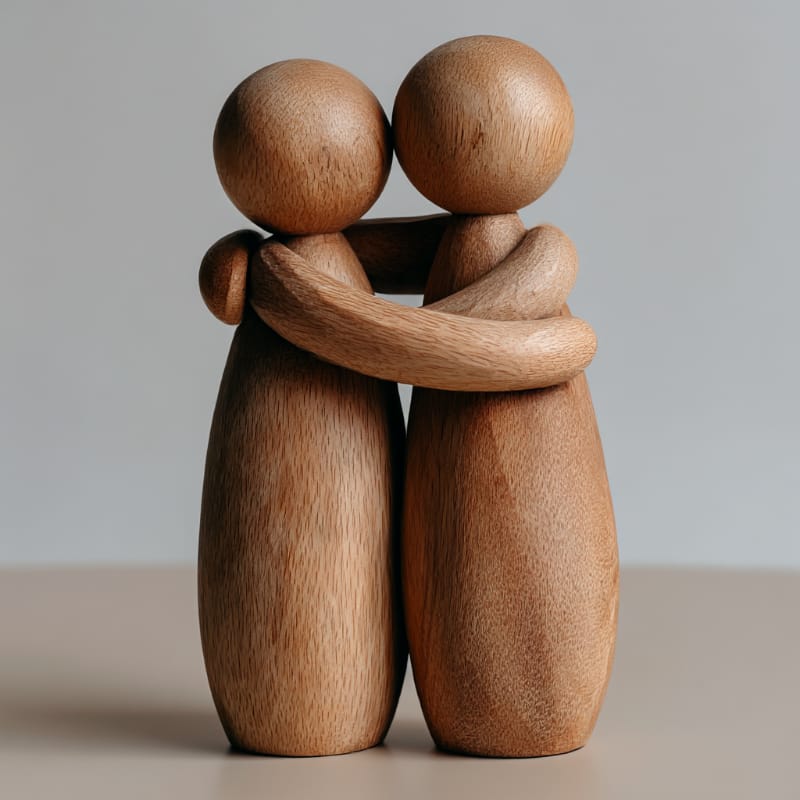- Cidpedia
- Posts
- Cidpedia Newsletter
Cidpedia Newsletter
ISSUE #16 JULY 14 2025
🌟 Cidpedia your Central Texas Resource
ALWAYS FRESH - Start your week empowered - CIDP updates, resources, and encouragement await! |
Trusted Information and Community for CIDP Patients, Caregivers, and Professionals |
Table of Contents
Editor’s Note: Connection Across Conditions
CIDP News & Research: New Frontiers
The Gift of Connection: The Remarkable People Met on the Rare Disease Journey
Feature Article:Parallel Paths: CIDP & Breast Cancer—When Mind and Body Battle Together
Podcast: Feel This
Ask the Expert
Resource Corn
Disclaimer

We Stand Together
✉️ Editor's Note: Connection Across Conditions - A Warrior's Perspective
As editor, I'm continually struck by the truth that illness doesn't exist in isolation. Many of us walking the CIDP path have friends or family battling breast cancer, lupus, or other autoimmune conditions. In this issue, we delve into the unexpected ways these journeys intertwine – mentally, physically, and emotionally, even when we think of ourselves as everyday warriors facing CIDP.
Then, life has a way of humbling you. You meet a real warrior. Perhaps a friend bravely facing their own health battle, a coworker tirelessly juggling responsibilities despite their own challenges, or even someone you encounter within the sterile walls of a clinic. Or maybe someone on the front lines, a nurse, a caregiver, giving their all. It's in these moments that perspective shifts.
Suddenly, the weight of your own struggles feels a little lighter. You realize, "I ain't got it so bad." I am reminded of an amazing warrior who came into my house all too few times for injections. These encounters instill a deep sense of gratitude and humility. The next time you look at the hands giving you an injection, remember who they belong to. Remember the person behind the care, the sacrifices they make, and the strength they embody. It's a reminder that the human capacity for compassion and unwavering support is perhaps the most powerful weapon we have in the face of adversity.
We’re also excited to launch our first audio podcast and bring more dynamic media to our newsletter.

Promising?
🚨 CIDP News & Research: New Frontiers
NVG-2089 Phase 2 Results: Nuvig Therapeutics reports that their Fc fusion protein showed promising efficacy for CIDP patients, with improved grip strength and reduced fatigue in early data.
Real-World Data on Self-Injected Immunoglobulin: Recent studies confirm that home-based SCIg therapy maintains stability for most patients, with fewer hospital visits and improved quality of life.
Emerging Biomarkers: Research teams are validating neurofilament light chain (NfL) as a marker for disease activity and treatment response, paving the way for more personalized CIDP care.

A Rare Pair
The Gift of Connection: The Remarkable People Met on the Rare Disease Journey
In the landscape of rare diseases, diagnosis often feels like arriving at a lonely outpost. The path is uncharted, the terrain unfamiliar, and the company, it seems, is scarce. Yet, as one ventures deeper, a remarkable phenomenon occurs: connections begin to form. These bonds, forged in the fires of shared experience, reveal the extraordinary individuals who light the way on this challenging path.
Among them are the medical professionals who go beyond the textbook. These are the doctors, nurses, and therapists who not only possess expertise but also demonstrate genuine compassion. They listen with intent, acknowledge the uncharted aspects of the disease, and partner with patients to navigate the complexities of their unique condition. They become allies, translating medical jargon into understandable terms and advocating for access to specialized care.
Then there are the fellow patients, the warriors who understand the journey with an intimacy that no textbook can offer. They are the ones who provide invaluable peer support, sharing tips on managing symptoms, navigating insurance hurdles, and simply offering a listening ear during moments of despair. They become beacons of hope, demonstrating that life, though altered, can still be fulfilling.
Within families, strength emerges in unexpected ways. Spouses become unwavering caregivers, children learn empathy beyond their years, and siblings become fierce advocates. These family units, though challenged, often discover a deeper level of connection and a renewed appreciation for life's precious moments.
And then, there are the advocates, the voices who refuse to be silenced. These individuals, often patients themselves, dedicate their time and energy to raising awareness, promoting research, and lobbying for policy changes that benefit the entire rare disease community. They amplify the voices of the unseen, ensuring that the needs of the rare are not forgotten.
On this uncommon path, these connections become more than just friendships. They are lifelines, sources of strength, and reminders that even in the face of the rare and unknown, one is never truly alone. The remarkable people met along the way are a testament to the human capacity for compassion, resilience, and the enduring power of connection.
🧠💪 Parallel Paths: CIDP & Breast Cancer—When Mind and Body Battle Together
Living with chronic inflammatory demyelinating polyneuropathy (CIDP) is a full-time job: balancing fatigue, pain, insurance paperwork, and that nagging worry—“What if this flare never ends?” Yet talk to any breast-cancer survivor and you’ll hear almost the same script. Different diagnoses, yes, but remarkably similar mental and physical hurdles. This feature explores how two very different diseases converge on daily life—and how patients, caregivers, and employers can respond with empathy and action.
🔄 1. Symptom Twins: Fatigue, Pain, and “Brain Fog”
Relentless tiredness
CIDP fatigue often comes from immune-driven inflammation and nerve inefficiency.
Breast-cancer survivors describe chemotherapy-induced exhaustion that lingers years after treatment.
Neuropathic pain
In CIDP, demyelinated nerves misfire, causing burning or electric shocks.
Up to half of taxane-treated survivors develop chemotherapy-induced peripheral neuropathy (CIPN) that mirrors CIDP pain.
Cognitive drag
CIDP “brain fog” can stem from poor sleep, chronic stress, or medications.
“Chemo brain” produces similar lapses in focus and short-term memory.
🗝 Takeaway: Whether the trigger is auto-antibodies or chemotherapy, the lived experience—slowed thinking, aching limbs, energy in short supply—feels strikingly alike.
💼 2. Work & Money: The Invisible Pay-Cut
📊 Registry data show 44% of CIDP patients and >50% of breast-cancer survivors with neuropathy alter their employment. Common paths:
Reduced hours or duty changes
Early retirement or job loss
Switching careers to remote or flexible roles
Why it matters: Income loss deepens anxiety, jeopardizes access to care, and can strain relationships. For many, the stress of “Will my boss understand?” outweighs the physical pain.
😟 3. Mental Health: Twice the Battle
Research across autoimmune diseases finds nearly double the rates of depression and anxiety compared with the general population. Add breast-cancer survivorship, and numbers climb again:
Cancer-related worry about recurrence
Trauma from intensive treatments
Guilt or frustration when bodies can’t “bounce back”
CIDP patients echo these themes—plus the extra burden of an often-invisible illness that friends may never have heard of.
👫 4. Coping Strategies That Cross Diagnoses
Challenge | CIDP Tools | Breast-Cancer Parallels |
|---|---|---|
Fatigue | Energy-budget planning; hydration; B-vitamins | Timed naps; graded exercise; iron & vitamin D checks |
Pain | Topical lidocaine; warm–cool contrast baths | Neuropathic agents; acupuncture; gentle yoga |
Brain Fog | Task batching; dictation apps | Memory notebooks; cognitive games |
Work | ADA accommodation letters; remote setups | Gradual return-to-work programs; ergonomic desks |
Mental Health | Mindfulness, CBT, support groups | Same—plus survivorship counseling |
🧩 5. Whole-Person Care: What Clinicians & Employers Can Do
Screen for mood disorders at every visit—pain scores alone miss half the story.
Acknowledge fatigue as a legitimate medical symptom, not laziness.
Offer multidisciplinary clinics where neurology, oncology, pain psychology, and rehabilitation share notes.
Educate HR teams on adaptive scheduling, remote technology, and insurance navigation.
Celebrate small wins: walking to the mailbox, finishing a work shift, or sleeping through the night.
🌱 6. Hope on the Horizon
Targeted therapies—FcRn and complement inhibitors for CIDP; antibody-drug conjugates that spare nerves in breast cancer—aim to lower treatment-related disability.
Digital fatigue trackers help correlate activity, mood, and symptom spikes in both groups.
Employer incentives for disability-inclusive workplaces are expanding under updated U.S. tax credits.
None of these advancements erase today’s challenges, but they sketch a future where fewer patients must choose between pain relief and a paycheck.
💡 Bottom Line: Different diseases, same life-altering hurdles. By sharing strategies across conditions, we amplify resilience, speed innovation, and remind every patient: your struggle is seen, your strength is real, and together we push toward better days.
🗣️ Feel This

Wired In
❓ Ask the Expert
Q: Can stress from a cancer diagnosis trigger autoimmune symptoms?
A: Stress is a known trigger for autoimmune flares. While cancer itself doesn’t cause CIDP, the physical and emotional toll can unmask or worsen underlying autoimmune tendencies.
Q: Are there new treatments on the horizon for CIDP?
A: Yes! Beyond immunoglobulin and steroids, next-gen therapies like FcRn inhibitors, complement blockers, and targeted biologics are in late-stage trials.
🧰 Resource Corner
Here are ten concise, high-quality resources—each link leads to a current, authoritative page you (and your readers) can trust.
NeurologyLive – Current Treatment Options in CIDP
https://www.neurologylive.com/view/treatment-options-in-cidpRare Disease Advisor – Phase 3 MOBILIZE & VITALIZE Trials of Riliprubart
https://www.rarediseaseadvisor.com/news/new-study-to-test-potential-cidp-treatment-opensSAGE Journals – Fatigue and Work Impact in Breast-Cancer Survivors
https://journals.sagepub.com/doi/10.1177/15347354221107750BMJ Mental Health – Autoimmune Disease and Elevated Depression Risk
https://mentalhealth.bmj.com/content/26/2/e300640GBS|CIDP Foundation Registry – Employment Changes in CIDP
https://www.gbs-cidp.org/research/voice-of-the-patient-reportPubMed – Quality-of-Life Effects of Chemotherapy-Induced Peripheral Neuropathy
https://pubmed.ncbi.nlm.nih.gov/30404213U.S. Pain Foundation – Mental Health & Autoimmune Conditions
https://uspainfoundation.org/resources/mental-healthGBS|CIDP Foundation International – Peer Support, Webinars, Advocacy
https://www.gbs-cidp.org/
Feel free to share or bookmark these links; each is regularly updated and user-friendly.
⚠️ Disclaimer
CIDPedia is a patient-led newsletter for educational purposes only, not a substitute for professional medical advice. Always consult your healthcare team before making treatment decisions.
Thank you for reading! Stay strong, stay curious, and keep shuffling forward. 🌱
If you’d like to suggest topics, share your story, or be a guest on our next podcast, reply to this newsletter or visit www.cidpedia.net.
📅 Closing Thoughts & How to Get Involved
Take advantage of these newsletters if you can, ask questions, and share what works for you. Together, we’re building a stronger, more informed CIDP community.
Want to support Cidpedia?
Share this newsletter, consider a small donation, or send us your feedback. Every voice matters.
Stay strong, stay informed, and stay connected!
Warm regards,
Richard Aikman
Editor, CIDPedia
⚠️ Disclaimer
Let's get something important out in the open: WE ARE NOT DOCTORS and WE ARE NOT GIVING ADVICE! Everything we share comes from my personal journey living with CIDP, from research and from MY healthcare TEAM. While I've walked this path for a number of years, please remember: This content is based on personal experience and publicly available information. It is not intended to diagnose, treat, cure, or prevent any disease. Always consult qualified healthcare providers for medical advice, what works for others may not work for you. |
Cidpedia is an independent, patient-led newsletter. All information provided is for educational and informational purposes only and is not intended as medical advice, diagnosis, or treatment. We are not medical professionals. Always consult your physician or qualified health provider with any questions regarding your health or medical conditions. We respect your privacy and adhere to HIPAA guidelines when sharing stories or community contributions. All shared experiences are anonymized unless explicit permission is granted |
Stay strong, stay curious, and keep shuffling forward. 🌱


Reply